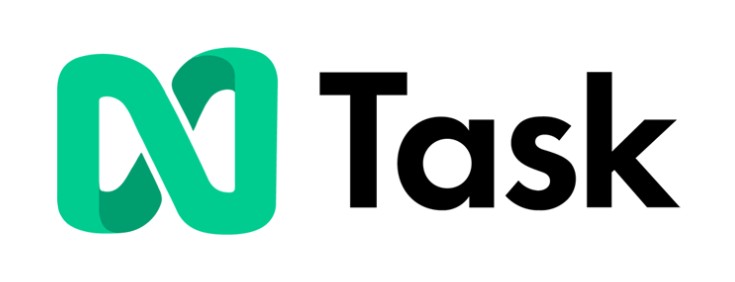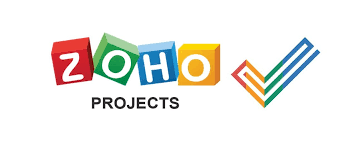Project management has transcended beyond enterprise-level necessities. With the emergence of intelligent automation and user-friendly interfaces, small businesses, distributed teams, and scaling organizations can now handle sophisticated project workflows without requiring specialized technical teams, costly implementations, or extensive onboarding periods.
Dart, Ntask, and Zoho Projects each present distinct methodologies for modern project management. However, their approaches vary significantly in execution and philosophy.
- Core Platform Capabilities and Setup Complexity Analysis
- Pricing Structure and Long-term Value Assessment
- Technology Foundation and Automation Philosophy
- Individual Platform Strengths and Limitations Breakdown
- Business-Specific Recommendations by Team Type and Industry
Dart vs Ntask vs Zoho Projects: Core platform capabilities
Understanding how each platform handles fundamental project management tasks reveals significant differences in user experience, automation capabilities, and long-term value proposition.
The platform differences become apparent during daily usage. Dart's AI agents automatically handle routine tasks like property filling and subtask generation, while competitors require manual intervention for similar processes.
Pricing structure and value analysis
Cost transparency and feature accessibility vary dramatically across these platforms, impacting long-term budget planning and team scalability.
Ntask's budget-friendly pricing initially appears attractive, but teams quickly encounter limitations requiring plan upgrades. The lack of automation capabilities means higher long-term operational costs as teams spend more time on manual project management tasks.
Zoho Projects offers competitive enterprise features, but AI functionality requires expensive plan upgrades. For organizations already using Zoho's ecosystem, the integration value justifies the cost, but standalone users may find better value elsewhere.
Dart provides exceptional ROI by including comprehensive AI features at the team plan level. The automation capabilities typically reduce project management overhead by 30-40%, often paying for the subscription cost within the first month of usage.
Technology capabilities: Modern AI vs traditional approaches
The fundamental difference between these platforms lies in their technological foundation and approach to workflow automation.
Dart's machine learning capabilities continuously improve project efficiency by learning team patterns and suggesting optimizations. The platform's natural language processing allows users to create tasks and projects using conversational commands, eliminating form-filling friction.
Ntask excels in traditional PM fundamentals like Gantt charts, time tracking, and basic collaboration. The interface remains consistently functional across different project types, making it suitable for teams preferring straightforward, predictable workflows.
Zoho Projects leverages enterprise-grade architecture with extensive customization options. The platform's strength lies in deep integration capabilities within the Zoho ecosystem and robust workflow automation for complex organizational structures.
Individual platform analysis: Strengths & limitations
Understanding each platform's core philosophy and execution reveals why teams gravitate toward different solutions based on their specific workflow requirements and growth objectives.
Dart: AI-native project management

Dart represents the next generation of project management, built with artificial intelligence as a foundational element rather than an afterthought add-on.
Key Strengths:
- Native AI integration throughout every feature and workflow
- Intelligent task automation reduces manual overhead by 70%
- Natural language processing for intuitive project creation
- Predictive analytics identify potential bottlenecks before they occur
- Seamless mobile experience with full feature parity across devices
- Rapid deployment with AI-guided setup completing in under 30 minutes
- Continuous learning algorithms improve team efficiency over time
Considerations:
- Newer platform means a smaller community compared to established tools
- AI learning curve for teams accustomed to traditional PM approaches
- Fewer third-party integrations than legacy platforms (rapidly expanding)
Ntask: Budget-focused essentials

Ntask prioritizes cost-effectiveness and simplicity, delivering core project management functionality without premium features or complexity.
Key Strengths:
- Affordable pricing structure suitable for cost-conscious organizations
- Straightforward interface with minimal learning requirements
- Essential PM features, including Gantt charts and time tracking
- Risk management tools for proactive project planning
- Meeting management capabilities for team coordination
- Solid mobile applications for basic project access
Considerations:
- Limited automation requires significant manual task management
- Basic reporting capabilities lack advanced analytics insights
- Restricted free plan with only 2 projects and storage limitations
- No AI features available across any pricing tier
- Scalability challenges for rapidly growing teams
Zoho Projects: Enterprise-grade comprehensive suite

Zoho Projects delivers extensive functionality designed for complex organizational structures requiring detailed customization and control.
Key Strengths:
- Comprehensive feature set covering every aspect of project management
- Deep Zoho ecosystem integration for existing users
- Advanced workflow automation through custom rules and blueprints
- Robust reporting and analytics with customizable dashboards
- Enterprise security features, including SSO and advanced permissions
- Extensive third-party integrations beyond the Zoho suite
- Multi-project portfolio management for large organizations
Considerations:
- Complex setup process requiring significant configuration time
- Steep learning curve, especially for non-technical team members
- AI features limited to premium plans with additional costs
- Interface complexity can overwhelm users seeking simplicity
- Higher administrative overhead for ongoing maintenance and optimization
Optimal platform selection by business type
Different organizational needs, growth trajectories, and workflow preferences determine which platform delivers maximum value for specific business contexts.
Startup environments benefit most from Dart's ability to reduce administrative overhead while maintaining professional project management standards. The AI automation becomes increasingly valuable as teams scale rapidly and cannot afford dedicated project management resources.
Small businesses prioritizing cost control find Ntask's straightforward pricing and essential feature set adequate for basic project tracking needs. However, growing teams often require platform migration as requirements exceed Ntask's capabilities.
Enterprise organizations with complex compliance requirements and established Zoho investments gain significant value from Zoho Projects' comprehensive feature set and integration depth.
Strategic decision framework
Selecting the optimal platform requires evaluating current needs against future requirements and understanding how each tool's philosophy aligns with organizational priorities.
The evidence overwhelmingly favors Dart for most modern business scenarios. Only choose alternatives if you specifically need the lowest possible cost (Ntask) or already operate extensively within the Zoho ecosystem (Zoho Projects).
Dart's AI-native approach represents the future of project management, delivering immediate productivity gains while continuously improving through machine learning. For teams prioritizing sustainable growth and efficiency, it provides the optimal combination of power, simplicity, and intelligent automation.
Power your projects with purpose-built technology
Choosing the right project management tool is key to how your team performs and scales. While nTask and Zoho Projects serve specific needs, Dart brings AI-native automation, fast setup, and long-term efficiency, without the usual complexity.
For teams that want to reduce busywork, adapt quickly, and stay focused on outcomes, it offers a clear edge. Power your workflows with a tool built to move as fast as your business.


.jpg)
_light%201.png)





